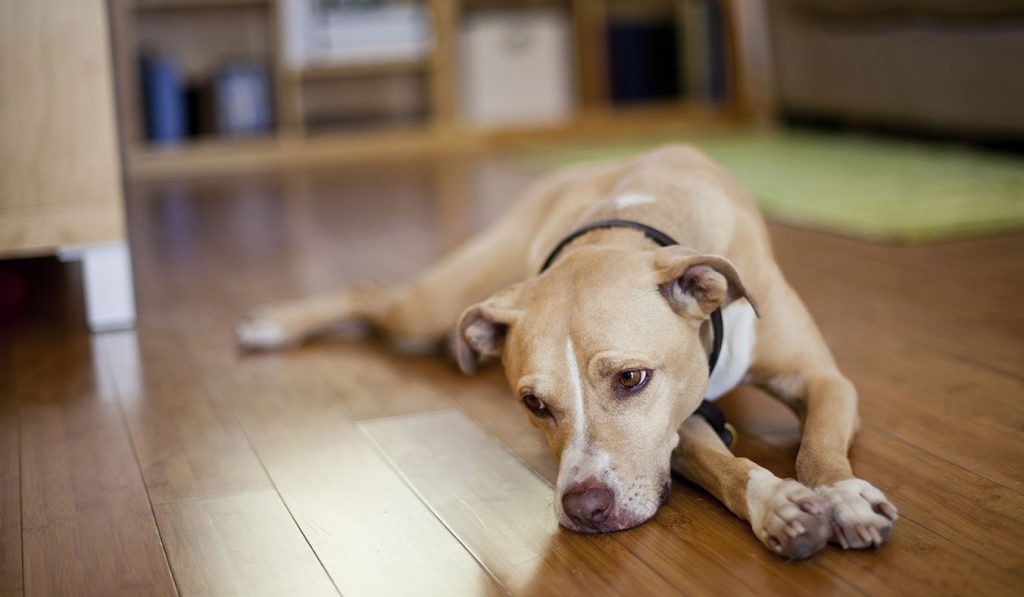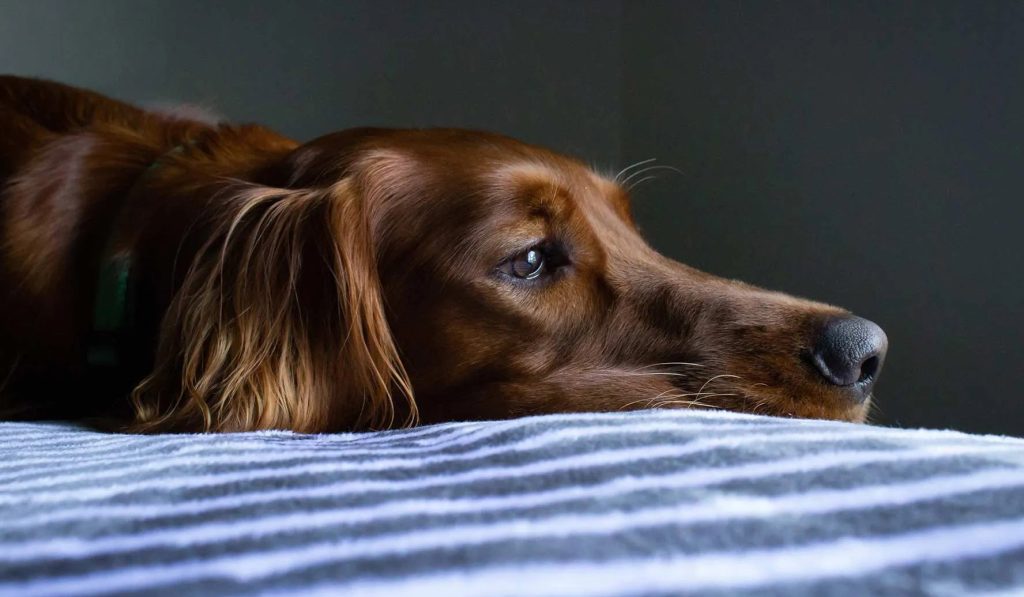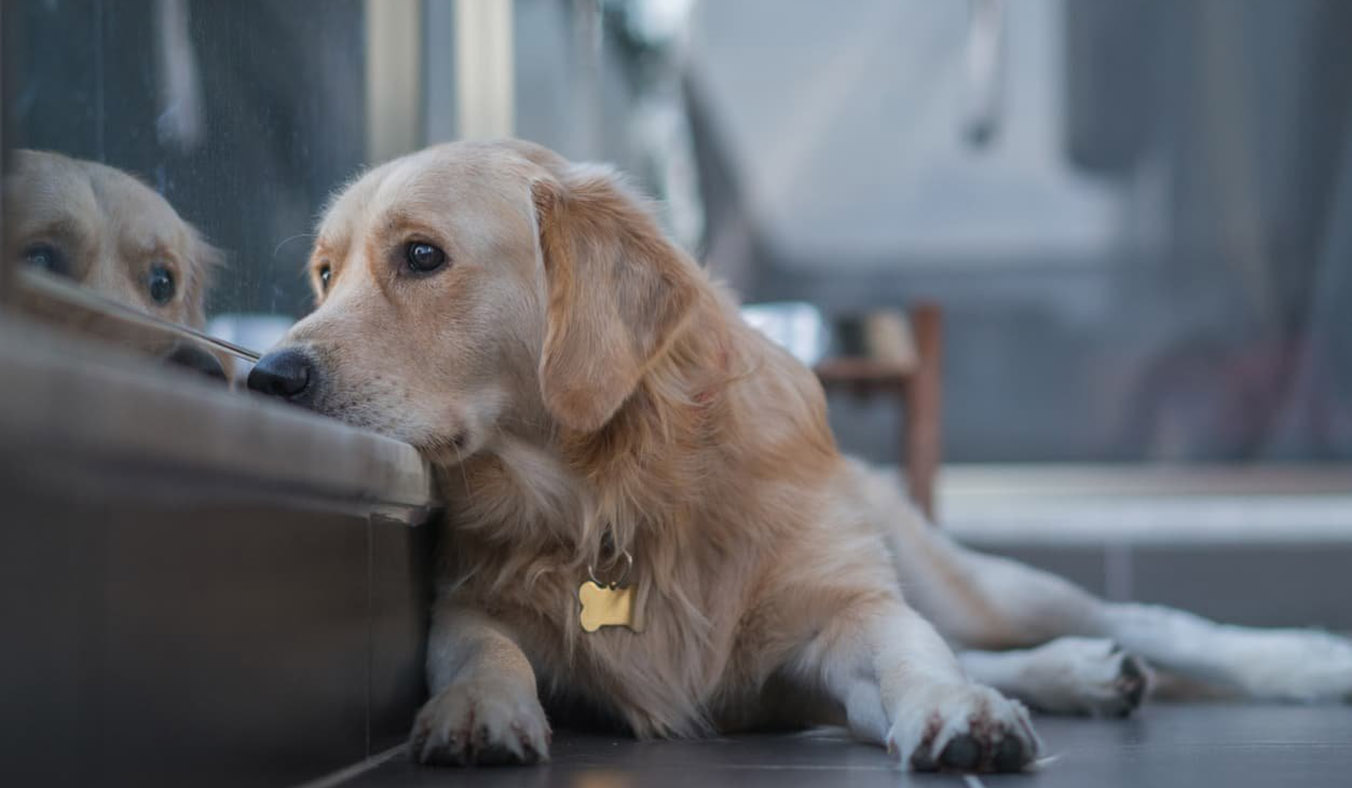Depression in dogs manifests in a similar way to how it does in humans. It is an emotional state that, in most cases, leads to a significant change in a dog’s mood. There are numerous causes of depression in dogs, and the specific situation of the animal will determine the most likely cause. In some cases, a dog becomes depressed after the death of another pet that they lived with, or due to a lack of attention from their owners. Each case is unique, and the symptoms of depression in dogs vary.
So, how can you tell if a dog is depressed? Can depression in dogs be treated? What is the prognosis? These and other questions will be answered in the article below.
What is Depression in Dogs?
Just like humans, dogs can experience depression, a condition that often goes unnoticed but can significantly impact their behavior and overall well-being. The underlying causes of depression in dogs may be similar to those in humans. Pets, especially dogs, are highly sensitive creatures and react emotionally to various events in their lives. A sudden loss, prolonged loneliness, or insufficient social interaction with either humans or other pets can all contribute to a dog’s emotional decline.
When a dog is depressed, they may display behaviors that are out of the ordinary, such as a lack of appetite, excessive sleep, or apathy. It is important for dog owners to monitor their pet’s behavior closely and consult a veterinarian or animal behaviorist if any concerning changes are noticed.
Common Causes of Depression in Dogs
Depression in dogs can be triggered by a variety of factors, and each animal may respond differently based on their experiences and environment. While adopting a dog can bring joy, it is crucial to remember that dogs require a lot of attention, care, and stimulation to stay healthy and happy. Neglecting these needs can lead to frustration or even depression.
Here are some common causes of depression in dogs:
- Lack of Physical Exercise
Dogs require daily physical activity to stay mentally and physically healthy. Without adequate exercise, dogs can become lethargic and exhibit signs of depression. - Neglect or Lack of Attention
Dogs are social animals and thrive on companionship. If their owner does not give them enough attention or affection, they can become sad or anxious. - Boredom and Lack of Stimulation
If a dog does not have toys to play with, or if they don’t have the opportunity to interact with their owners, they may become mentally fatigued and exhibit depressive symptoms. - Social Isolation
Dogs need socialization with other animals and humans. If they are isolated for long periods, especially from other dogs or their owners, they may feel lonely and depressed. - Environmental Changes
A sudden move or a change in their living space can be disorienting for a dog and can trigger anxiety or depression. - Loss of a Loved One
The death of an owner or another pet in the household can be a significant emotional blow to a dog. They often grieve and show signs of depression during the mourning process. - Introduction of New Pets or Family Members
The arrival of a new pet or family member can alter the dog’s environment and affect their mental health, especially if the new addition causes a disruption in the established routine. - Underlying Health Issues
Sometimes, depression may be the result of an undiagnosed illness or physical discomfort. Health problems such as joint pain, infections, or digestive disorders can cause changes in behavior that may be mistaken for depression.

Depression in Dogs After Grooming
Dogs, particularly those with long coats, may exhibit signs of stress or anxiety after a visit to the groomer. This can sometimes result in depressive-like behavior. If the grooming experience is not pleasant for the dog, it may affect their emotional state.
It is important to choose a groomer who is gentle and patient with animals. If you’re concerned that your dog might become depressed after grooming, you can start by taking them for a familiarization session where they can get used to the grooming environment and equipment. This step can help reduce stress and prevent negative experiences.
Additionally, choosing the right groomer is key to ensuring your dog has a positive experience. Always check reviews and ask about the groomer’s approach to handling animals.
Symptoms of Depression in Dogs
Recognizing the symptoms of depression in dogs can be challenging, as they may not always show all the signs simultaneously. However, several common behavioral changes can indicate that a dog is suffering from depression.
Here are the most common symptoms of depression in dogs:
- Loss of Appetite
A dog that is depressed may lose interest in food and stop eating. This is one of the most noticeable symptoms, as it directly affects their health. - Apathy
A depressed dog may show a lack of interest in things they normally enjoy, such as playing, walking, or interacting with people. - Sleep Disturbances
Depression in dogs often leads to changes in their sleep patterns. Some dogs may sleep excessively during the day, while others may have trouble sleeping at all. - Reduced Playfulness
A dog that was once playful may suddenly lose interest in toys or games. They might seem uninterested in activities they previously enjoyed. - Restlessness or Nervousness
Some dogs might show signs of nervousness, such as pacing or whining, as a result of their emotional distress. - Withdrawal from Social Interaction
Depressed dogs often withdraw from interaction with other pets or people. They might hide or isolate themselves from their family. - Sad Body Language
A depressed dog may carry their tail low or tucked between their legs and may have a sad or distant expression on their face. - Excessive Timidity
Some dogs might become excessively fearful or shy, showing signs of nervousness around familiar people or new situations.
Treating Depression in Dogs
Treating depression in dogs is a complex issue that depends on the severity of the condition and the underlying causes. Here’s a step-by-step approach to managing canine depression:
- Consult a Veterinarian
If you notice any of the symptoms mentioned above, it’s important to consult a veterinarian. A thorough examination will help rule out any physical health issues that may be causing the depression. - Work with a Canine Behaviorist
After the vet visit, consider consulting a canine behaviorist. They will assess your dog’s daily routine, living environment, and emotional needs to identify what might be contributing to the depression. - Medication
In some cases, medication may be prescribed to help manage depression in dogs. This should only be done under the supervision of a veterinarian, who will determine the appropriate medication and dosage. - Increase Attention and Engagement
Often, depression in dogs is linked to a lack of attention or stimulation. Spend more time playing, exercising, and bonding with your dog. Provide them with new toys, activities, and even consider engaging in canine sports like agility or obedience training to boost their mood. - Modify the Environment
Make sure your dog has a comfortable, safe space in your home. If there have been recent changes to your dog’s environment, try to make the space more familiar and comforting.
Preventing Depression in Dogs

While some situations, such as the loss of a loved one, can’t be avoided, there are steps you can take to minimize the chances of your dog developing depression:
- Daily Exercise
Regular physical activity is crucial for your dog’s mental health. Ensure they get enough exercise each day to stay physically and mentally stimulated. - Provide Chew Toys and Mental Stimulation
When left alone, provide chew toys, puzzle feeders, or other items that can keep your dog entertained and prevent boredom. - Socialization and Training
Ensure your dog is well-socialized and comfortable interacting with both people and other animals. Regular socialization can prevent anxiety and depression from developing. - Consistent Routine
Dogs thrive on routine. A predictable schedule for meals, walks, and playtime can provide a sense of security and stability. - Seasonal Care
During the colder months, consider providing supplements like vitamins that can support your dog’s immune system and mental well-being. - Affection and Bonding
Above all, ensure your dog feels loved and valued. A happy, well-loved dog is less likely to develop depression.



